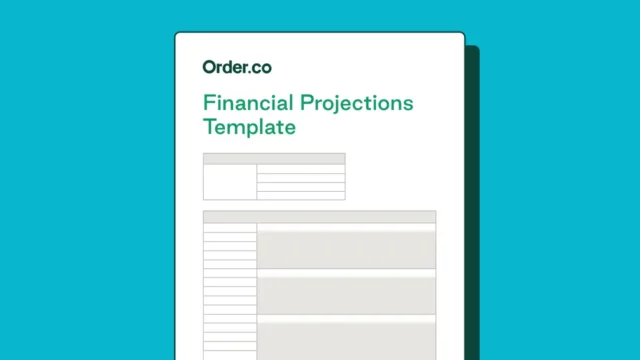The Importance of Financial Forecasting and How to Start

The Importance of Financial Forecasting and How to Start
It’s easy for growing businesses to fall into a habit of short-term financial thinking. New marketing tactics and innovative product-building are exciting, sure. But behind the scenes, finance and accounting are the unsung heroes keeping the company’s financial life on track.
If you’ve gotten by so far without financial forecasting, you may be asking, “What’s the worst that can happen?”
A lot, and it can happen when you least expect it. Missing financial statements and gaps in your forecasting can cause cash flow issues, supply shortfalls, slow disaster recovery, dips in valuation, and problems getting a loan.
Good forecasting doesn’t have to be complex, but it does need to be consistent and data-driven. The right approach makes navigating the peaks and valleys of running a business much easier.
By the end of this article, you’ll know:
- What financial forecasting is and how it works
- The benefits of consistent forecasting and budgeting
- How technology can boost financial forecasting
Download the free tool: Financial Projections Template
What are some common financial forecasting methods?
Financial forecasting means using past data and current market research to anticipate what lies ahead for your business performance. It’s part of the fundamentals of business planning, taking what you know and using it to plan what comes next.
While forecasting can’t help you dodge every problem, it can put you in the right position to benefit from healthy economic periods.
Some common forecasts to use for planning include:
- Sales forecasts to estimate future sales volume. Sales forecasting helps you plan production, inventory, and workforce requirements.
- Cash flow forecasts to estimate the movement of cash in and out of your business. Cash forecasts help you manage liquidity and meet financial demands.
- Income forecasts to estimate future revenue coming into the business.
- Demand forecasts to look at consumer demand, right-size your inventory levels, and plan buying or production. Demand forecasts help you avoid stockouts and stale products.
- Operational forecasts to plan out the costs of day-to-day financial operations. An operational forecast may look at workforce scheduling, supply chain, and production planning.
Financial forecasting vs. budgeting: What are the differences?
Budgeting and forecasting are connected, but distinct, activities. Budgeting helps you decide where your money will go. Forecasting helps you predict what's coming so you can plan how to react.
Purpose
- Budgeting focuses on allocating your current resources effectively.
- Forecasting aims to predict future market conditions and business outcomes.
Time frame
- Budgeting typically covers a fixed period, such as a fiscal year.
- Forecasting often looks months or years ahead based on trends and data analysis.
Flexibility
- Budgets are generally static and adjusted only periodically.
- Forecasts are dynamic and updated frequently (as often as quarterly or monthly) as new information becomes available.
Function
- Budgeting focuses on controlling costs and revenues.
- Forecasting supports long-term strategic planning.
Data sources
- Budgeting relies mainly on internal historical financial data.
- Forecasting uses both internal business data and external market indicators.
A tool like Order.co centralizes indirect spend data and provides valuable reporting that helps you understand real-time spend so you can make informed decisions about future allocation.
Why is financial forecasting important?
Strong financial forecasting leads to better financial outcomes, more stable cash flow, and increased access to credit and investment to help your small business grow.
With a forecast in place, you can:
- Plan spending for your teams
- Help procurement and supply chain teams think about capacity and allocation
- Track metrics and sales targets
Forecasting offers you a way to check the health of your finances. As the fiscal year progresses, it shows how your strategies are working, helps contextualize performance against market conditions, and allows your finance team to course correct when needed.
Forecasting helps by:
- Acting as the basis for a budget: Forecasting is the first step of financial planning. It looks at known data and uses it to prepare for future events.
- Creating accountability: Writing down your financial game plan helps you track progress toward your goals. Review and planning are also a big part of successful spend management.
- Helping you prepare for outliers: Forecasting reduces risk by letting you plan ahead. Careful scenario-building can decrease your exposure and improve recovery when things go wrong.
- Supporting growth: Forecasting with solid data also helps you take advantage of strong markets.
Basic elements of financial reporting
Your balance sheet, income statement, and cash flow statement are the foundation of forecasting. Together, these pro forma financial reports show your company’s whole financial picture.
- The income statement shows financial performance across periods. It reflects vital metrics like revenue, cost of goods sold (COGS), gross profit, operating expenses, pre-tax earnings, and net earnings.
- The balance sheet reports your assets, liabilities, and equity since the previous reporting period. It’s a snapshot of your company’s financial position.
- The cash flow statement tracks cash moving in and out of your business. It shows the net change in your cash balance over each period.
Key areas to improve your financial modeling
When building a financial forecast, prioritize areas of focus like past performance and financial data, and select an appropriate forecasting model to improve forecast accuracy. These data points are concrete and easy to contextualize. Other elements require your judgment and expertise to get right.
Prioritize these fundamentals:
- Complete historical data: If you want to forecast revenue, start by looking at what’s already happened. Reviewing previous sales and expenses gives you a clear picture of what you’ve done before and how it’s worked.
- Accurate expenses and earnings: When creating your forecast, try to estimate expenses based on current company goals and known cost drivers like inflation and rising costs of goods and services. Good procurement data can help you estimate future spending better.
- Best/worst-case scenario planning: Be creative in your forecasting logic by considering different scenarios. Plan for events like cyber attacks and natural disasters, but also think about positive surprises like rapid growth or investment returns.
- Thorough risk analysis: While it’s important to prepare for outside risks, don’t overlook internal challenges like bad actors, lawsuits, or crises. Fraud alone costs businesses over $3B per year, with a median loss of $145,000 per case, so risk reduction matters.
How to forecast your financial situation accurately
If you’re building your first forecast or refining an existing one, these steps will help you gather the right data and improve financial visibility:
1. Set objectives
Begin by outlining the purpose of your forecast. Are you trying to secure a loan? Planning for the next fiscal year? Evaluating a new project? Your objectives will shape the approach and detail of your forecast.
2. Pull together historical data
Collect financial data from the past 3–5 years, including income statements, balance sheets, and cash flow statements. Including indirect spending data can give you a clearer picture of where your cash is going.
3. Look at market conditions
Research current market trends that could affect your business. Consider industry growth rates, competitor analysis, regulation changes, and economic fluctuations like inflation or unemployment.
4. Identify your revenue streams
List all your current and expected sources of revenue. Use historical data, market analysis, and confirmed contracts to develop financial projections and estimate sales volume across each stream.
5. Project expenses
Break down your expenses into fixed and variable costs to get a full picture of cash outflows:
- Fixed costs, like rent and equipment leases, remain constant.
- Variable costs, like supplies purchases and services, fluctuate with changing prices or needs.
Use historical averages as a guide, but adjust your calculations to provide a buffer.
6. Calculate net income
Subtract projected expenses from forecasted revenue to show your net income before taxes. Remember to factor in non-operational income or expenses that may impact your bottom line.
7. Include taxes and interest
Estimate taxes and apply them to your projected net income. Account for any interest payments or income from loans or investments.
8. Prepare a cash flow projection
Develop monthly or quarterly cash flow forecasts by estimating your receivables and ongoing expense payments.
9. Create what-if scenarios
Create best-case, worst-case, and most-likely scenarios. Use a what-if analysis (with a forecasting tool or Excel formulas) to test independent variables such as sales volume, price points, and costs. This helps you get an idea of likely risks and opportunities.
Tools like Order.co bring all your financial data together in one place and add context to your research, making the financial forecasting process much quicker and easier.
How technology like Order.co improves financial forecasting and budgeting
Understanding how variable costs impact expected revenue is essential for creating more accurate forecasts for your company. Software can support better planning by helping you visualize expenses over time. It allows you to see where you’re spending your money in order to anticipate future spending and prepare for the unexpected.
- Indirect spend is sometimes a big chunk of expenses. An automated procurement tool can help reduce costs and uncover savings within your current purchasing process.
- Software tools help you target high-quality vendors and supplies to cut spending. Using a platform with a curated catalog like Order.co to guide purchasing saves money in the short term while keeping orders in one place.
- Tools with AP automation features make invoicing and payment faster and easier. A procurement software tool can create invoicing workflows and enable automated payments that avoid penalties and unlock early payment discounts.
Using a procurement platform, you can harness the full power of your indirect spend data. Order.co offers a clear view of your indirect spend so you can accurately forecast expenses and look for opportunities to save.
If you’re ready to boost your financial future planning with better spend visibility and control, schedule a demo of Order.co.
Get started
Schedule a demo to see how Order.co can simplify buying for your business
"*" indicates required fields



